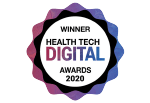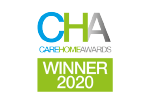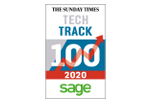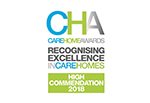
Published in Care Management Matters
This year has seen rapid adoption of new technologies in social care, but what’s in store for 2021? In this feature, Jonathan Papworth of Person Centred Software shares his thoughts on where he sees regulators and government focusing their attention.
This year will be remembered as the year that COVID-19 hit, and few places were harder hit than social care, with between 15,000 and 25,000 vulnerable people dying in residential care as a result of coronavirus.
No one will know the true figures for mortality. No one knew the impact of coronavirus on social care until it was too late, and this lack of knowledge and lack of information has been recognised by the Secretary of State as being unacceptable. Next year will see a significant focus on fixing the lack of information, with proposals being put to the treasury to fund or part-fund systems needed to enable collation of data from across all care providers.
Sharing of information
In 2000, the Freedom of Information Act was passed which created a public ‘right of access’ to information held by public authorities. Access to information is recognised by the government as a basic human right. However, COVID-19 has taken this from many, shutting down family access to their loved ones, and with it the opportunity to fully share their lives.
Edinburgh University is conducting a study on the impact of lockdown. The lead researcher, Dr George Palattiyil, Senior Lecturer of Social Work, says ongoing involvement is a key concern for families once a relative has been admitted to a care home. Humans are social animals, and nothing fully replaces direct human interaction, but there are many things that can help. Video conferencing has been a massive saviour for many, with families able to interact virtually, but video conferencing doesn’t replace everything.
Visiting a loved one gives insight into not just how the person is at the time, but also the care they receive and the environment they live in. Some of this information can be replaced by having access to information about the care that’s been provided. Social care providers are regulated on the documented quality of evidence about the care they provide and the care needs of the individual. This information has been created and maintained, and yet most care providers don’t share this information with anyone. There has been a historical fear of others having access to this information, but logically fears should only arise if the quality of the care or the quality of the documentation is substandard. If it is the quality of care, then the family has a vested interest in knowing this. If it is the quality of documentation, then the regulator will rate the care provider poorly. So, no one really has a vested interest in hiding this information from family members other than care providers who have something to hide. There is a logical connection between quality of care and transparency of information, and this connection will hopefully become increasingly recognised.
This all leads to one obvious conclusion, and that is that care providers will, over the course of the next few years, be adopting information systems that provide the data that government needs to fight this and any future pandemic, and gives assurance to family members that their loved ones are being properly cared for.
2021 will be the year, I believe, that paper-based systems will be recognised by government and regulators as not adequate for the standard of care this country expects. About 30% of care providers have already adopted digital care systems and these are the enablers for collating information and disseminating that information to those who have rights to it. During 2021, I would be surprised if this doesn’t increase to more than 50%, by which time it will become an expected component of social care in the same way that nurse call systems have become in residential care, and smoke alarms in support living environments.
Delivering benefits
Whilst there are literally hundreds of case studies and CQC reports highlighting the benefits of digital systems, there remains a reluctance for some care providers to take the step away from their beloved paper systems.
One case that might help focus attention is of a care home on the Isle of Skye that became the centre of media attention due to an outbreak of COVID-19 and the devastating effect this had on residents and care workers. The care home has agreed to be taken over by NHS Highland, who have over a dozen care homes already that all use a digital clinical care system. The person who has been asked to manage the home has demanded that a digital clinical care system is implemented as part of them taking over managing the home. Such is the benefit of digital care technology that people who have understood the benefits simply will not accept reverting to paper-based systems.
The great advantage of a digital platform, beyond the direct benefits in efficiency and transparency, is that the data they collect can be used in new and innovative ways.
One of the key trends that is underway, but will likely accelerate over the next 12 months, is interoperability between healthcare and social care. There are some obstacles to making healthcare data available to social care in terms of information governance, but use of the NHS Data and Security Protection (DSP) Toolkit is being encouraged to help overcome this. Passing this self-assessment allows providers access to NHS Mail, anda lower ‘entry level’ threshold has been negotiated for social care, but this lower threshold is temporary and is due expire at the end of December 2020.
Irrespective of the challenges, the benefits of joining up information held in social care with that held in healthcare will help improve outcomes as individuals transition between care settings. It is likely that the core issues of information governance will be identified and resolutions worked on in the foreseeable future, and once this has been achieved then there is likely to be an increasing need for social care to embrace digital systems or they will risk being left out in the cold.
Collecting the data
A second key trend for next year will be automated data collection. Historically, all evidence of care was done manually, with people writing down a person’s weight, temperature, or blood pressure – using a measurement device, but writing the answer into the evidence of care system. However, new technology is emerging that can automatically highlight and/or record issues.
We are already seeing acoustic monitoring systems that can automatically identify certain symptoms, such as a cough that indicates COVID-19. There are products currently available that will periodically take a person’s vital measurements, and these are widely used in the consumer sector with devices such as Fitbit and step counters. There are wearable devices that detect if someone has had a fall, or if their continence pad needs changing.
These devices are only going to get more accurate and will become increasingly widely used. Periodic night-time checks on a person’s wellbeing that interrupt their sleep patterns and risk leaving them unattended between checks will become a thing of the past eventually, and the rate of development of new devices is only going to increase in the coming years.
Artificial intelligence
One final trend that is starting to arrive is automated machine learning based on the recent evidence of care. There are already artificial intelligence (AI) based tools that help to identify the level of pain a person is experiencing, and this has been shown to reduce over-medication. A study by University College London has found technology that’s been able to predict, with 87% accuracy, a person likely to suffer a fall in the next two weeks.
As social care providers increasingly embrace digital technology to capture evidence of care and individuals' care needs, so the opportunities for automated analysis of trends will improve. The perception that care staff have of a person’s changing care needs will become supported by evidence and insights not readily available historically.
Some of these principles are already being trialled for complex behavioural issues in young people with learning disabilities, where the combination of events that trigger an episode of challenging behaviour are not immediately obvious. Without analysing vast quantities of information, something impractical to do at a human level, the combination of events is hard to trace, however it is not only more possible, but immensely more cost-effective, at a computer level.
There is one trend that I hope will not become widely established, and that is for robotic care. There are several studies showing that people with dementia can interact with robotic devices that have been trained to respond to people verbally. This does entertain people and, given advanced dementia, when a person will often repeat themselves regularly, there is an obvious benefit against either a care worker being tied up for little benefit or a person being left alone with no interaction.
There has been no long-term study yet, but the Edinburgh University study is showing that people need interaction with people, and whilst robots will get cleverer and will have some use in care settings, I personally do not believe that there is any substitute for human interaction, and the amazing work that care workers do is simply irreplaceable.




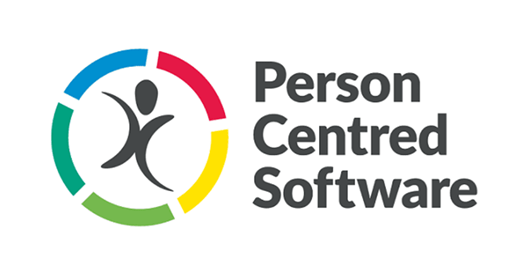


.webp?width=80&height=80&name=HTD%20Awards%202023%20Badge%20(4).webp)








